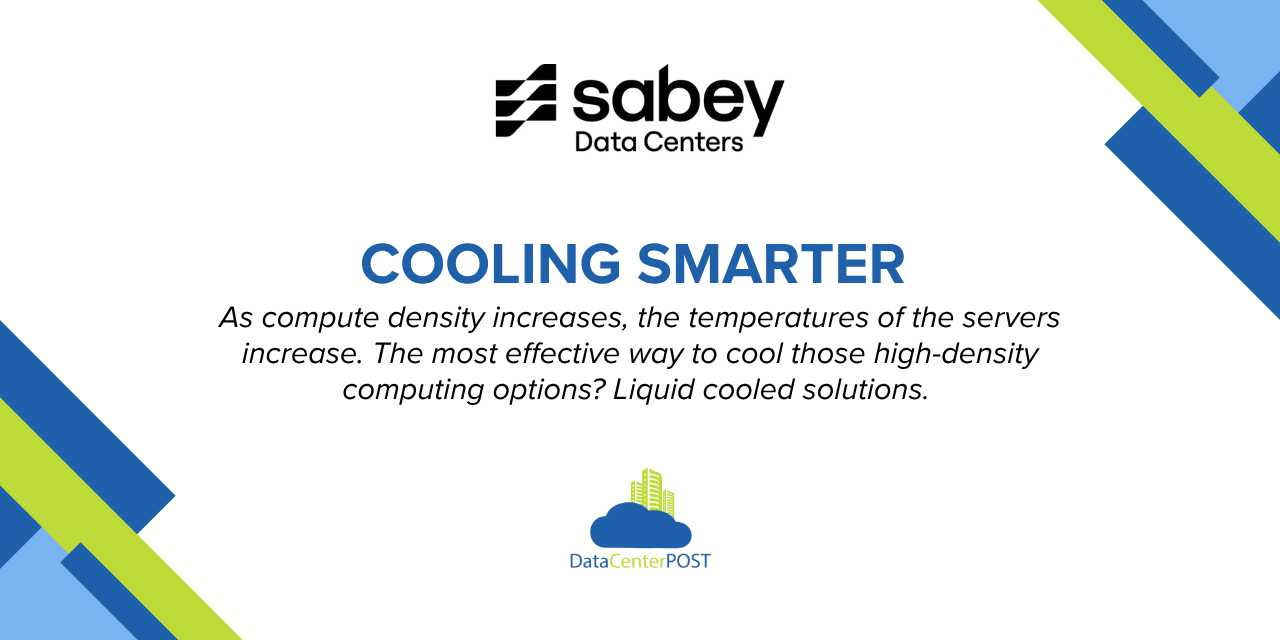Originally posted by Sabey Data Centers.
As compute density increases, the temperatures of the servers increase. The most effective way to cool those high-density computing options? Liquid cooled solutions.
As artificial intelligence (AI), machine learning, and high-performance computing workloads surge, data centers are being pushed to new limits. At Sabey Data Centers, we’re committed to leading this transformation, especially when it comes to sustainable, scalable, and reliable cooling solutions.
Today’s high-density server racks routinely exceed 30kW, and projections suggest that by 2027, some will surpass 100kW per rack. Traditional air-cooling systems increasingly struggle to efficiently manage the heat generated by these next-generation workloads. Even under optimal conditions, air-cooling systems typically cap out at 50 kW per rack, leaving a widening gap between what’s needed and what’s possible. In the face of this challenge, liquid cooling has emerged as an ideal solution for modern, high-density data centers.
Benefits of Liquid Cooling
Liquid cooling has several key advantages. The technology provides direct contact with heat-generating components, dissipating heat more efficiently and maintaining optimal operating temperatures even at extreme densities. By reducing reliance on energy-intensive fans and large-scale HVAC systems, it significantly improves Power Usage Effectiveness (PUE) and lowers overall energy consumption. Plus, as AI and other high-density workloads grow, liquid cooling supports rack densities up to 200kW, without the need for proportional increases in floor space or mechanical infrastructure.
Due to its enhanced energy efficiency, liquid cooling means a smaller carbon footprint, making it an appealing choice as companies increasingly work to reach sustainability goals. Additionally, these systems can enable heat reuse for district heating or industrial processes, aligning with ambitious ESG and net-zero commitments.
To continue reading, please click here.

